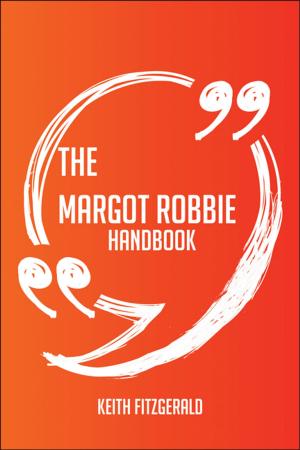The Barnet Book of Photography - A Collection of Practical Articles - The Original Classic Edition
Nonfiction, Reference & Language, Reference, Fiction & Literature| Author: | Various | ISBN: | 9781486447473 |
| Publisher: | Emereo Publishing | Publication: | March 18, 2013 |
| Imprint: | Emereo Publishing | Language: | English |
| Author: | Various |
| ISBN: | 9781486447473 |
| Publisher: | Emereo Publishing |
| Publication: | March 18, 2013 |
| Imprint: | Emereo Publishing |
| Language: | English |
Finally available, a high quality book of the original classic edition of The Barnet Book of Photography - A Collection of Practical Articles. It was previously published by other bona fide publishers, and is now, after many years, back in print.
This is a new and freshly published edition of this culturally important work by Various Various, which is now, at last, again available to you.
Get the PDF and EPUB NOW as well. Included in your purchase you have The Barnet Book of Photography - A Collection of Practical Articles in EPUB AND PDF format to read on any tablet, eReader, desktop, laptop or smartphone simultaneous - Get it NOW.
Enjoy this classic work today. These selected paragraphs distill the contents and give you a quick look inside The Barnet Book of Photography - A Collection of Practical Articles:
Look inside the book:
The outfit for development which need only be taken is as follows: four developing dishes, bottles or cartridges of the dry developer, ammonia diluted to half its strength in a glass stoppered bottle (if in a wooden case, as for medicine bottles, it will be a further protection), a couple of tins of hyposulphite pounded up before the journey, carried in small tins (such tins as the half-plate platinum paper comes in are very convenient), two or three empty six ounce medicine bottles with good corks, a two or four17 ounce measure, a washing rack with a trough (there is a folding rack in the market which answers admirably; it has v shaped grooves which never damage the edges of the film, and one rack will take twenty-two glasses back to back). ...The chief differences to be observed are (1) that the different parts of the image follow one another more rapidly than with pyro-soda, even though the plate may have been correctly exposed, and (2) the colour of the reduced silver is somewhat bluer than with pyro-soda,36 and therefore in order to obtain the same degree of printing opacity, as distinct from visual opacity, development must be carried a little further. ...It is best to put the plate in a dish standing on the sink and have a piece of flexible indiarubber tubing reaching from the tap to within a couple of inches or so of the top of the dish, so that the water may not splash too much.39 After washing in this way, the plate is placed in a grooved zinc rack, which is immersed in a tank (preferably of zinc), containing sufficient water to completely cover the plates, and here it remains until the whole batch of plates in hand has been developed and they can all receive their final washing together.
Finally available, a high quality book of the original classic edition of The Barnet Book of Photography - A Collection of Practical Articles. It was previously published by other bona fide publishers, and is now, after many years, back in print.
This is a new and freshly published edition of this culturally important work by Various Various, which is now, at last, again available to you.
Get the PDF and EPUB NOW as well. Included in your purchase you have The Barnet Book of Photography - A Collection of Practical Articles in EPUB AND PDF format to read on any tablet, eReader, desktop, laptop or smartphone simultaneous - Get it NOW.
Enjoy this classic work today. These selected paragraphs distill the contents and give you a quick look inside The Barnet Book of Photography - A Collection of Practical Articles:
Look inside the book:
The outfit for development which need only be taken is as follows: four developing dishes, bottles or cartridges of the dry developer, ammonia diluted to half its strength in a glass stoppered bottle (if in a wooden case, as for medicine bottles, it will be a further protection), a couple of tins of hyposulphite pounded up before the journey, carried in small tins (such tins as the half-plate platinum paper comes in are very convenient), two or three empty six ounce medicine bottles with good corks, a two or four17 ounce measure, a washing rack with a trough (there is a folding rack in the market which answers admirably; it has v shaped grooves which never damage the edges of the film, and one rack will take twenty-two glasses back to back). ...The chief differences to be observed are (1) that the different parts of the image follow one another more rapidly than with pyro-soda, even though the plate may have been correctly exposed, and (2) the colour of the reduced silver is somewhat bluer than with pyro-soda,36 and therefore in order to obtain the same degree of printing opacity, as distinct from visual opacity, development must be carried a little further. ...It is best to put the plate in a dish standing on the sink and have a piece of flexible indiarubber tubing reaching from the tap to within a couple of inches or so of the top of the dish, so that the water may not splash too much.39 After washing in this way, the plate is placed in a grooved zinc rack, which is immersed in a tank (preferably of zinc), containing sufficient water to completely cover the plates, and here it remains until the whole batch of plates in hand has been developed and they can all receive their final washing together.















